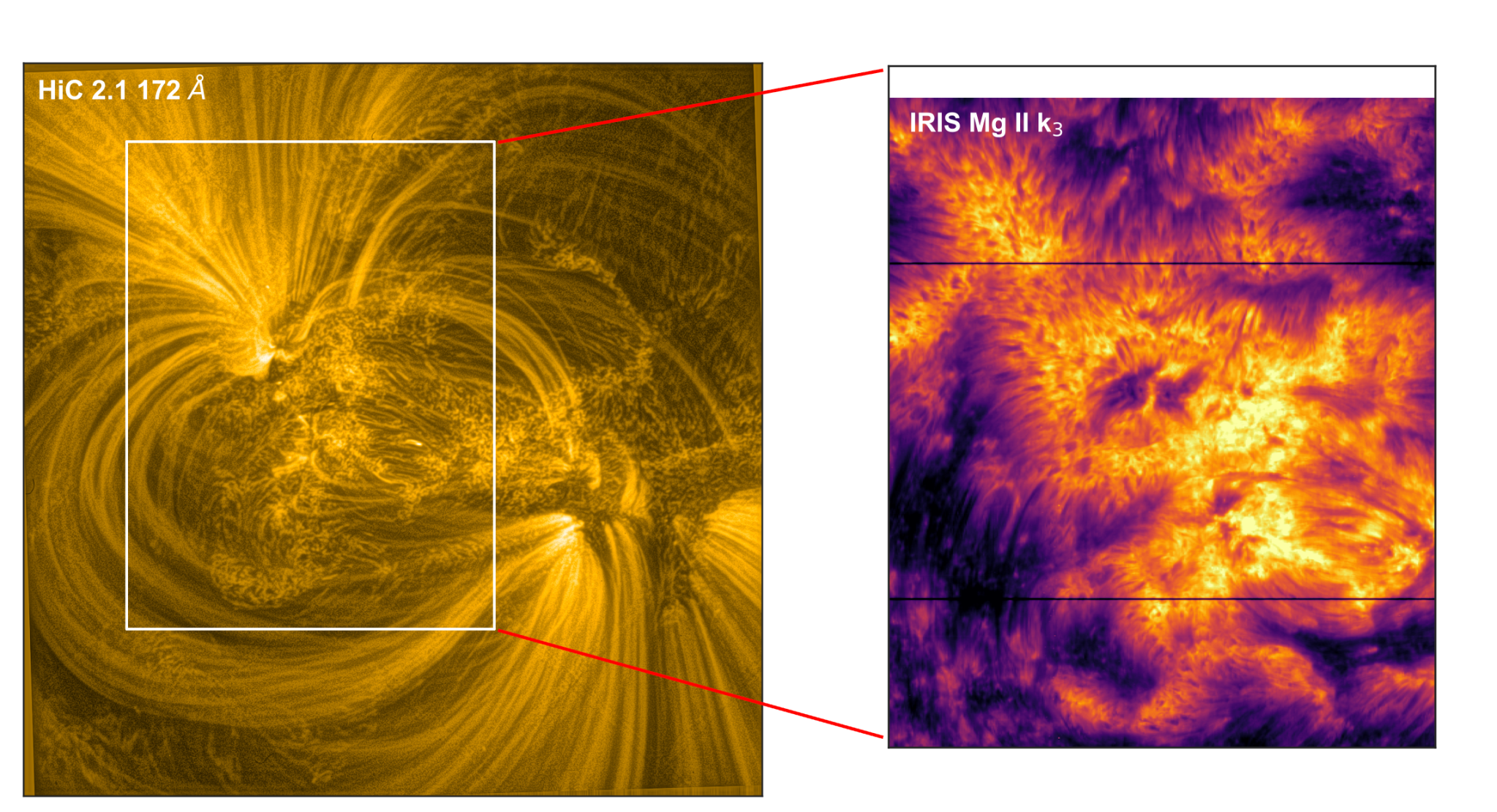Did you know the Sun has moss? Due to its resemblance to the earthly plants, scientists have named a small-scale, bright, patchy structure made of plasma in the solar atmosphere “moss.” This moss, which was first identified in 1999 by NASA’s TRACE mission, blossoms around the center of a sunspot group, where magnetic conditions are strong. It straddles two atmospheric layers known as the chromosphere and corona and hides below the long feathery ropes of plasma known as coronal loops.

For decades, scientists have struggled to understand how this mossy region is connected to the Sun’s lower atmospheric layers and how material there is heated from 10,000 degrees Fahrenheit up to nearly 1 million degrees Fahrenheit — 100 times hotter than the bright surface just below. Now, research enabled by NASA’s High Resolution Coronal Imager (Hi-C) sounding rocket and NASA’s Interface Region Imaging Spectrograph (IRIS) mission have given scientists insights into the superheating mechanism at play in the moss.
Observations from these instruments combined with complex 3D simulations have now revealed that electrical currents may contribute to heating the moss. Throughout this region there is a mess of magnetic field lines, like invisible spaghetti. This tangle of magnetic spaghetti creates electrical currents that can help heat material to a wide range of temperatures from 10,000 to 1 million degrees Fahrenheit. This local heating in the moss appears to occur in addition to heat flowing from the hot, multi-million-degree overlying corona. This insight, published in the journal Nature Astronomy on April 15, can help scientists understand the larger question of why the Sun’s entire corona is so much hotter than the surface.
“Thanks to the high-resolution observations and our advanced numerical simulations, we’re able to figure out part of this mystery that’s stumped us for the past quarter of a century,” said author Souvik Bose, a research scientist at Lockheed Martin Solar and Astrophysics Laboratory and Bay Area Environmental Institute, NASA’s Ames Research Center in California’s Silicon Valley. “However, this is just a piece of the puzzle; it doesn’t solve the whole problem.”
For that, many more observations are needed. Some are coming soon: Hi-C is scheduled to launch again this month to capture a solar flare, and it may also capture another moss region together with IRIS. However, to obtain observations that can fully address how the corona and moss are heated, scientists and engineers are working to develop new instruments onboard the future MUlti-slit Solar Explorer (MUSE) mission.
IRIS and TRACE are part of NASA’s Explorers Program.
By Mara Johnson-Groh
NASA’s Goddard Space Flight Center, Greenbelt, Md.
Media contact: Sarah Frazier
NASA’s Goddard Space Flight Center, Greenbelt, Md.































